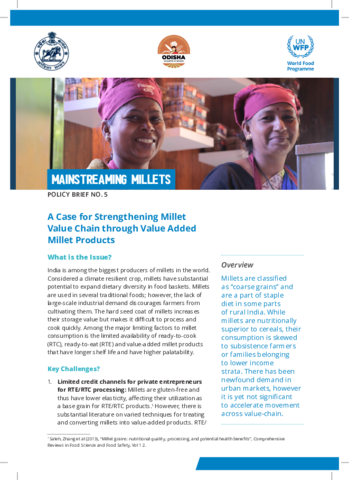
Millets are a super-food that has immense potential to improve dietary diversity. It is a hardy crop that is drought- and pest-resistant, is a part of subsistence diet and still faces significant hurdles in its forward market linkage. Production regions and processing zones don’t coincide in India, diverting consumption of value-added products to niche, urban markets. Postharvest processing is labor-intensive and often uses milling equipment meant for other grains, reducing grain recovery. RTE/RTC processing techniques are available, but its gluten-free nature restricts the kind of products created using millets as a base. Identifying the right technology for RTE/RTC production is prohibitively priced. While the Government has a dedicated IIMR for research and enterprise incubation, most projects run on a pilot basis or with private sector partners in a subdued role. There is a need for the Ministry of Food Processing Industries to encourage mechanization and create a conducive environment for pivoting research & development efforts to the private sector, with government aid (need-basis), identifying RTE/RTC processing as part of the MSME sector for credit access, decentralizing processing units to production sites, and creating employment opportunities, especially for women.
